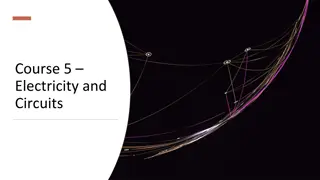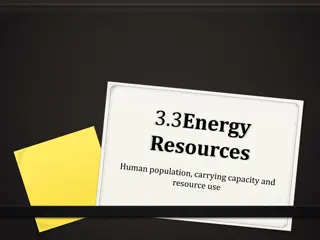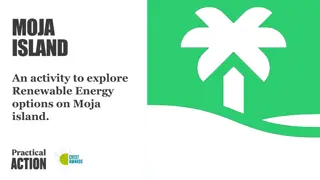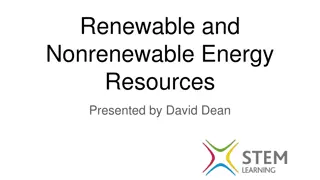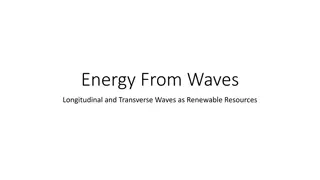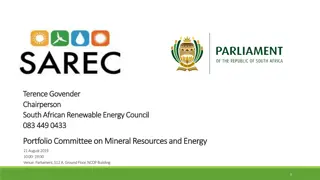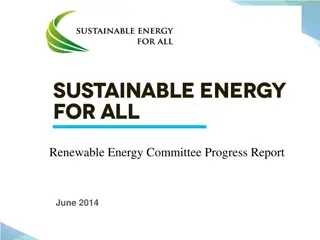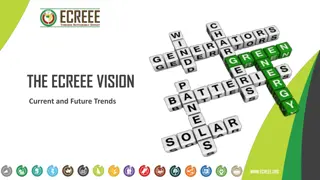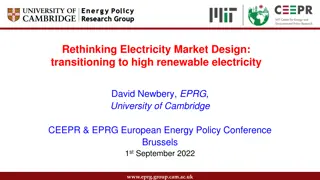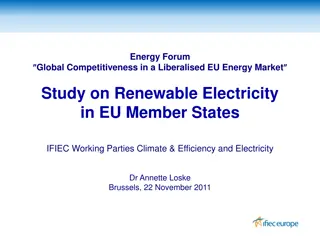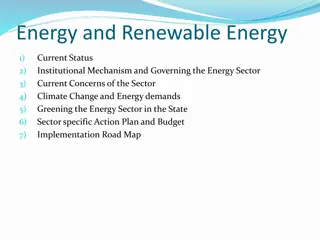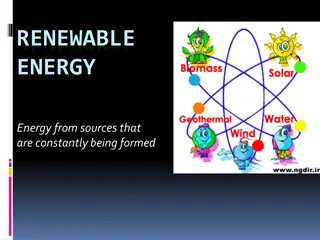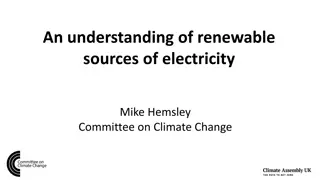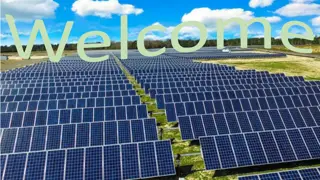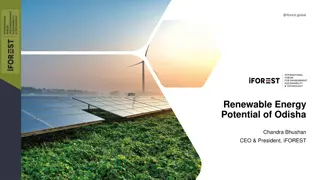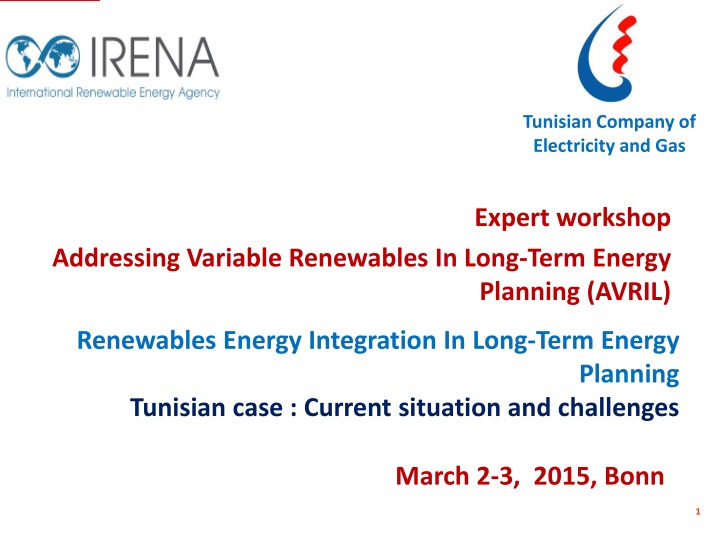
Tunisian Company of Electricity and Gas: Renewable Energy Challenges
This content delves into the current energy context in Tunisia, the national energy strategy focused on renewable energy sources, power generation planning processes, and the integration of renewable energy in long-term energy planning. It highlights the challenges and strategies for transitioning towards a more sustainable energy landscape in Tunisia.
Download Presentation

Please find below an Image/Link to download the presentation.
The content on the website is provided AS IS for your information and personal use only. It may not be sold, licensed, or shared on other websites without obtaining consent from the author. If you encounter any issues during the download, it is possible that the publisher has removed the file from their server.
You are allowed to download the files provided on this website for personal or commercial use, subject to the condition that they are used lawfully. All files are the property of their respective owners.
The content on the website is provided AS IS for your information and personal use only. It may not be sold, licensed, or shared on other websites without obtaining consent from the author.
E N D
Presentation Transcript
Tunisian Company of Electricity and Gas Expert workshop Addressing Variable Renewables In Long Term Energy Planning (AVRIL) Renewables Energy Integration In Long Term Energy Planning Tunisian case : Current situation and challenges March 2-3, 2015, Bonn 1
Content 1. Tunisian current energy context 2. National energy strategy 3. Power generation planning process 4. Results of RES integration approach 5. Perspectives 2
1. Tunisian current energy context Continuous increase of the electricity demand (5%/y) Reliance on NG for power generation (97%) Limited electricity exchange through the neighboring countries 75% of NG global demand for power generation Need for an Energy transition Structural deficit in energy balance (41% in 2014) Increase of energy price subsidies 3
2. National energy strategy Aim : Energy supply security Energy Efficiency Diversification of energy sources Development of Renewable Energy Sources (RES) is one of the axis of the new energy strategy National target for 2030 : Increasing the share of RES in the Electrical Energy Mix up to 30% 4
2. National energy strategy - Continuous updating of the Tunisian Solar Plan - A project-law about power generation from RES is under study 15% WIND 70% 30% RES CONVENTIONAL PP 10% PV 5% CSP 5
2. National energy strategy To take into consideration - Competitive - Creating jobs - Free CO2emissions - Intermittent - High investment costs - Need for pumped storage stations - Need for flexible generation units - Need for back up capacities 6
3. Power generation planning process Methodology Load duration curve Current power generation Retirements Candidates power plants Projected fuel prices Constraints : Reserve Margin LOLP Developing power generation at least cost approach (Investment+ Fuel + O&M + ENS) with adequate service quality Long term power generation expansion Power plant generation Annual expenses (investment, fuel, O&M, ENS) Used model : Wien Automatic System Planning Package WASP (developed by IAEA) 7
3. Power generation planning process RES integration approach in generation planning Given its intermittence, RES are modeled to operate in fuel saving : RES Optimal Integration Predefined target Developing a long-term power generation plan without RES considering reliability constraints. Step 1 Modeling RES as (i) thermal power plants with no consumed fuel and with availability considered as load factor or (ii) hydro plant. Step 2 Integrating RES up to that investment commitments balance fuel saving costs. Integrating RES up to predefined target. Step 3 8
4. Results of RES integration approach Case Study Energy generation by fuel type RES Impact on reliability LOLP (%) 1,2 6% RES Without RES Case 1 : RES Optimal Integration With RES 0,8 28% NG 0,4 66% Coal 0,0 Reference : What possible energy mix in Tunisia on 2030 ? (Study STEG-WB, 2013) 9
4. Results of RES integration approach Case Study Energy generation by fuel type RES Impact Case 2 : 30% RES (Predefined target) Saving fuel 30% RES Power generation overcapacity (off peak problem) 45% Coal 25% NG Reference : What possible energy mix in Tunisia on 2030 ? (Study STEG-WB, 2013) 10
4. Results of RES integration approach WASP Limits Due to use of LDC, WASP can not model properly PV plants (No difference between morning and evening peaks). Despite the WASP ability of periodic modeling, using the RES hourly profile generation is necessary. 11
5. Perspectives Use other RES integration approaches such as considering residual electricity demand (valid only for predefined projects). This approach consists in : Defining hourly profiles of power generation from RES projects. Deducing, from electricity demand curve, the energy generation from RES. Optimizing power generation plan with the residual electricity demand. Use other planning model which can properly model RES (by using load curve) such as MESSAGE model ( IAEA Workshop / Tunisia, 2013). 12
Tunisian Company of Electricity and Gas Expert workshop Addressing Variable Renewables in Long Term Energy Planning (AVRIL) Thank you for your attention Emna BALI Studies and Planning Management ebali@steg.com.tn 13



